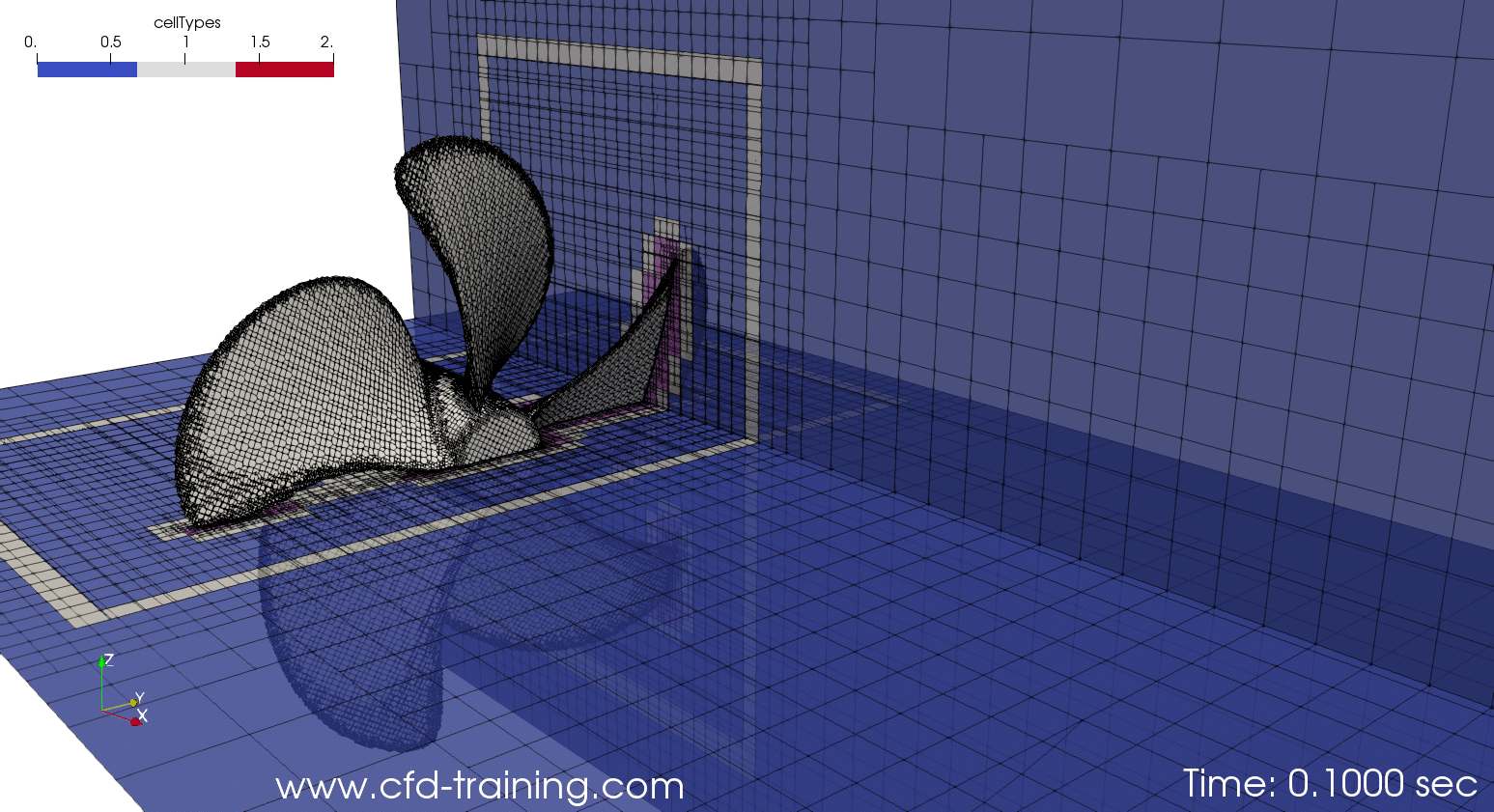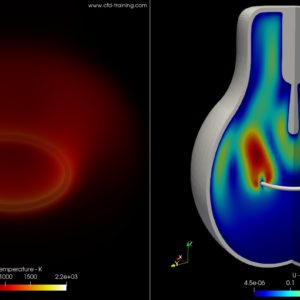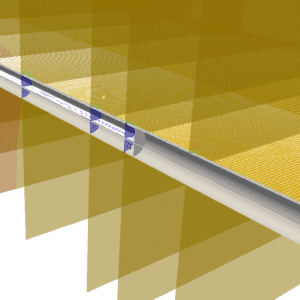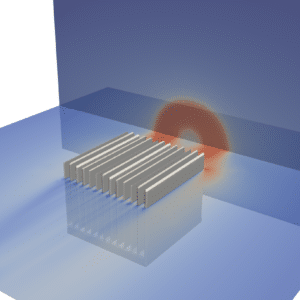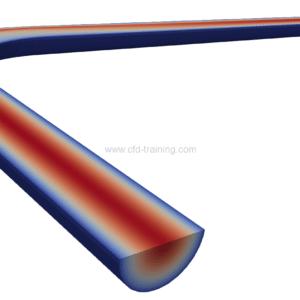Description
This tutorial shows how to use mesh meshes with OpenFOAM®. The study case (3D) is a ship propeller (kp505 model : http://www.simman2008.dk/KCS/kcs_geometry.htm) in open-water at constant rotational speed of 100 rad/sec (950 rpm). This kind of numerical model is often used for assessing open-water performances curves of propellers (KT, KQ). The mesh overset technique is used to capture solid body movements and is particularly interesting for large displacements or rotation, where mesh deformation methods fail.
- The tutorial uses the overPimpleDyMFoam solver (pimple version with the mesh overset technique) introduced since the 1706+ version of OpenFOAM
Calculation time:
- Around 4 hours on 8 cores.
Prerequisites/Information:
-
OpenFOAM®: Tested on versions 2406+. Warning, the tutorial does not work with versions (4.0, 5.0, 6.0, 7.0 etc.) from the OpenFOAM® Foundation (www.openfoam.org).
- The tutorial is designed to run on 8 cores but can be easily modified to be run on the number of core chosen by the user.
- 8 Gb of RAM.
-
It is recommended that you use the latest version of OpenFOAM® + to improve the performance of the overset module.
- Paraview (post-processing).
CFD-training does not give any warranty to the numerical results obtained within this tutorial due to the absence of verification or validation.
